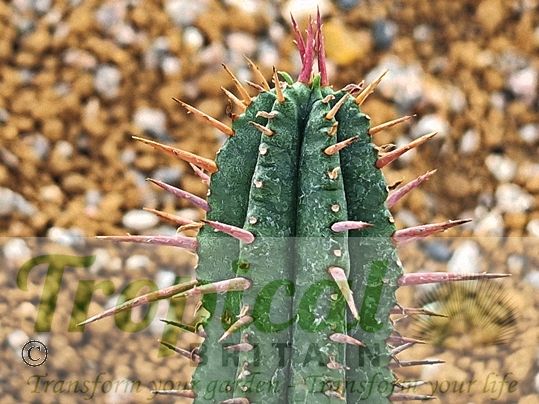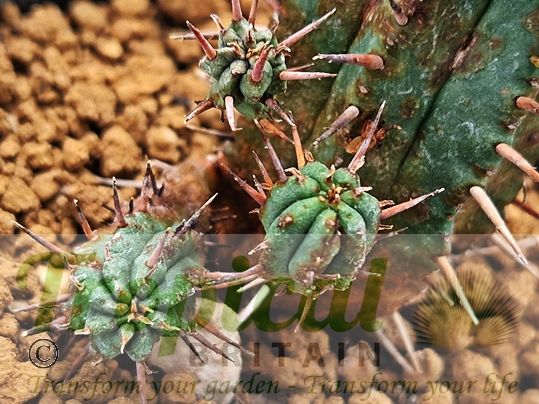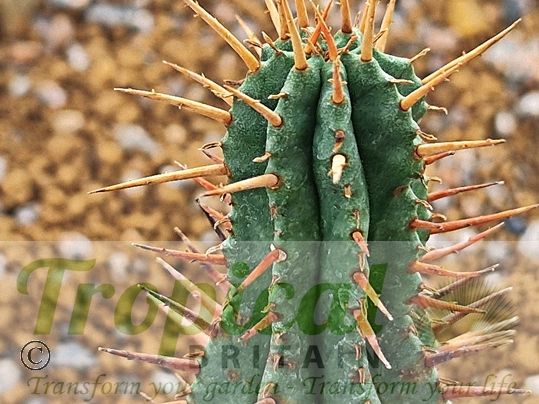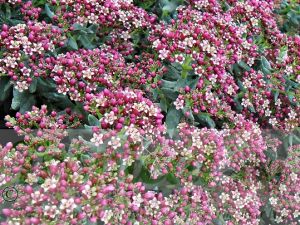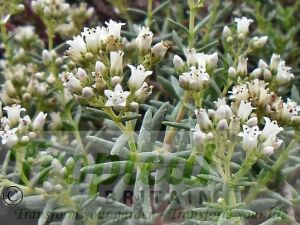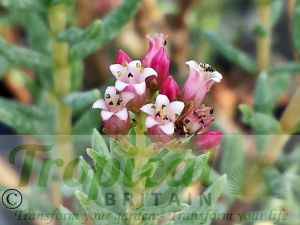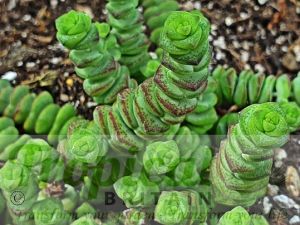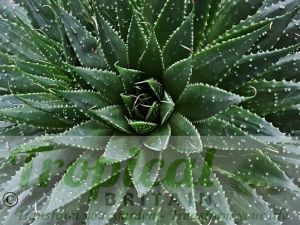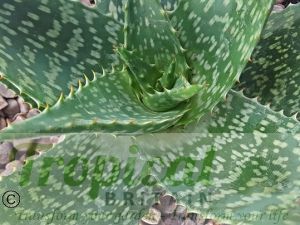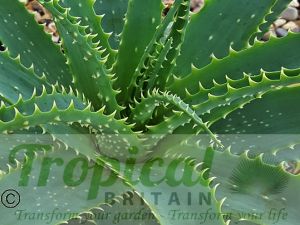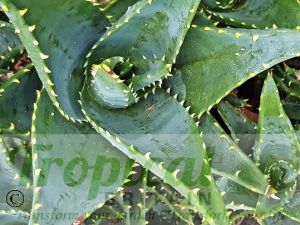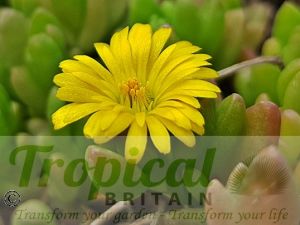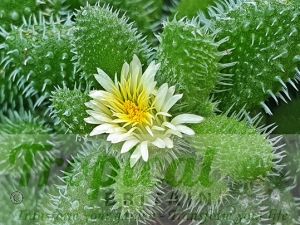Euphorbia inconstantia
Euphorbia inconstantia is a naturally-occurring interspecific hybrid first described by R. A. Dyer in 1931 and found by him in Eastern Cape to the north of the city of Makhanda which was at the time called Grahamstown. Dyer thought it was a new species and only later was it realised that it was a hybrid. It is usually cited in most literature as a cross between Euphorbia heptagona and Euphorbia polygona however populations of Euphorbia heptagona do not occur within reach of Euphorbia polygona in the vicinity and it is now thought to be a hybrid between Euphorbia pentagona and Euphorbia polygona. To the northeast and northwest of Makhanda, Euphorbia inconstantia can be found growing in close proximity to these two species and has a variable appearance with some specimens more closely resembling Euphorbia pentagona and others more closely resembling Euphobia polygona. (It is perhaps also worth mentioning at this point that Euphorbia polygona is closely allied to Euphorbia horrida and the two taxa are phenotypically very similar with Euphorbia polygona having somewhat narrower and more green stems. It is sometimes cited that Euphorbia horrida has more greenish-yellow cyathia but they both tend to have purplish cyathial glands). There are also numerous recognised infraspecific varieties of these species and the entire complex is a rich illustration of the dynamic nature of evolutionary process.
Euphorbia inconstantia - like its close cousins - requires a very free-draining substrate, little water and full sun. It should not be watered at all during the winter months. It is found in its natural habitat at elevations of 500m and has some cold tolerance.
Additional Information
| Order | Malpighiales |
|---|---|
| Family | Euphorbiaceae |
| Sub-Family | Euphorbioideae |
| Synonyms | euphorbia x inconstantia |
| Geographical Origin | South Africa: Eastern Cape |
| Cultivation | Sunny warm aspect. Well-drained, sandy, gritty substrate. Water very sparingly, not at all during winter: October to March. Ideal indoors as a houseplant. If placed outside in the summer take care that it doesn't become water-logged during rainy weather |
| Eventual Height | 1m |
| Eventual Spread | 60-90cm |
| Hardiness | Has some cold tolerance and will take very mild frost for brief periods but because it must be completely dry during winter it is a challenge to grow outdoors even in the mildest of locations. A rain shelter and fleece is recommended. Ideal houseplant |

Free DELIVERY
ON ALL ORDERS OVER £99THIS OFFER IS VALID ON ALL OUR STORE ITEMS.

